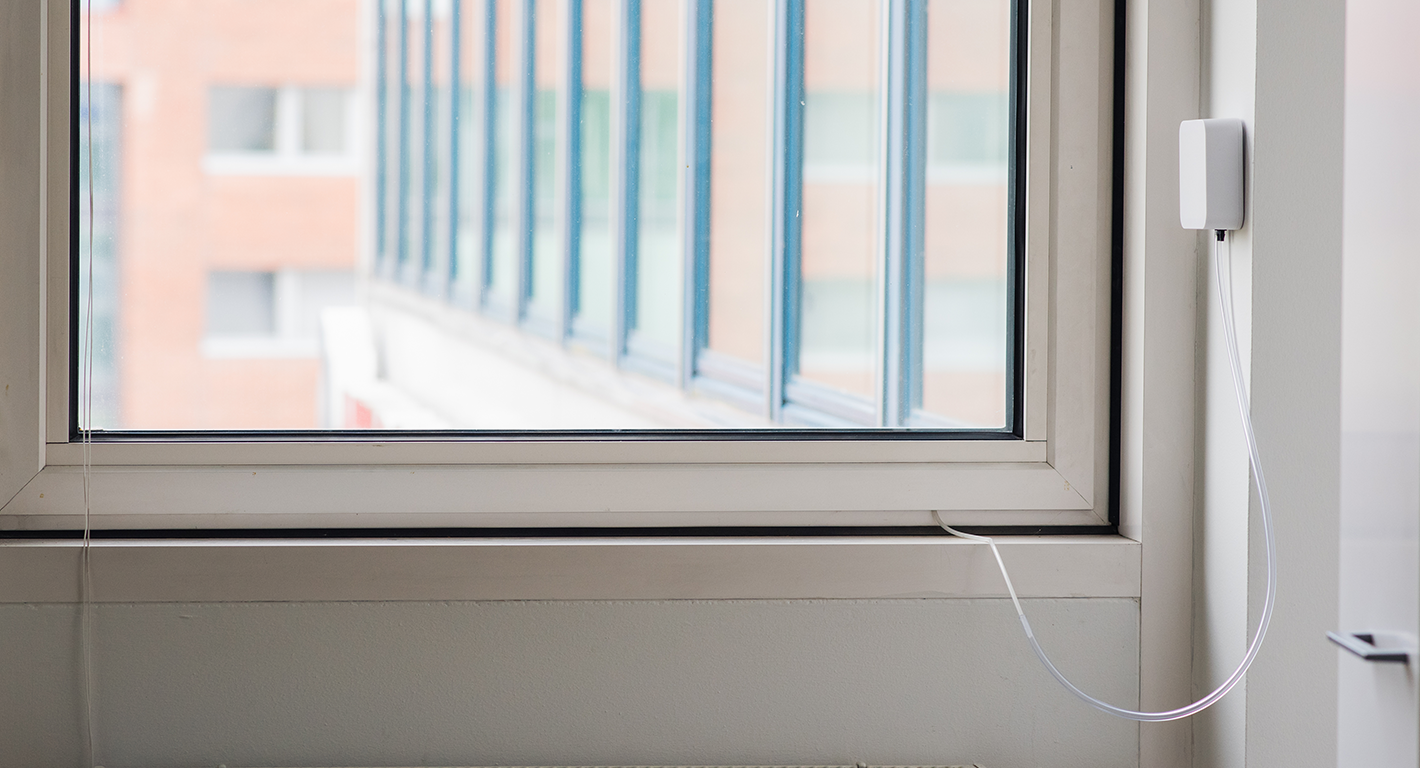Topics in focus:
- What is air pressure?
- Why it is important to measure air pressure in office and commercial buildings?
- What effects can air pressure have on health and wellbeing?
- Monitoring air pressure
Air pressure, also known as atmospheric or barometric pressure, is the force applied by air molecules as they press down on the Earth and all other surfaces, including people, objects, and walls to your building spaces.
Breathing problems, headaches and migraines are caused from a fall in pressure difference from the way air pressure influences how blood vessels widen and narrow. Just like when a plane takes off people experience muscle expansions, swelling, and stiff pain. Additionally, on a daily basis, an imbalance in atmospheric pressure may lead to occupants experiencing irritability, restlessness, inattention and impulsiveness. Unpleasant for all parties concerned.
Higher air pressure means positive, and lower air pressures are negative. Generally speaking – a room with negative pressure will be pulling in outside air through leaky doors and windows. A room with too much positive pressure will be pushing conditioned air out of the building/space, leaving quite an uncomfortable room – as will be explained also further in the text.
The importance of monitoring and balance within spaces
Air pressure refers to the force of the air molecules. Differential pressure, on the other hand, is about the difference in air pressure between two areas. Indoor and outdoor air pressure are very different from one another. For example in rapidly changing climates (Much like the United Kingdom) may experience phenomenon changes switching from positive and negative pressure differences. During the summer months, warm air tends to make its way inside, heavily increasing cooling costs, and if cooling is not left in-check then we may experience really chilly and light breathing irritability.
On the other hand, during the winter months, cool air instead will be drawn and heating costs will raise – sometimes leaving with moisture levels below the standard threshold and making breathing very heavy and irritable for your lungs, as often then seen companies and spacial managers installing humidifiers. Additionally, humid air can be drawn to the edges of the building walls, where it may condense into moisture, causing mold and other related problems to appear.
Effects on health and wellbeing
The quicker theories suggest that changes in air pressure can trigger joint-pain and some cases arthritis but because air pressure is related also to other weather factors like temperature and humidity, it is difficult to pinpoint whether it is solely one of the other or a combination of all.
Headaches, migraines, and irritability are the most common consequences of an imbalance in air pressure whether it is through positive or negative air pressure levels. Regardless, the consequences very much lead to decreases in productivity in all areas of life, and can account to hundreds or thousands of € in annual sick leaves.
Monitoring
The most accurate method to monitor the difference in pressure between two rooms, or between indoor and outdoor air, is to use a differential pressure sensor or manometer. Usually, a device would have pressure tubes connected on both sides isolated from one another and gather readings as often as 10 minute intervals.
As all buildings unintentionally operate under some level of positive or negative pressure, ideally, most buildings should have a positive pressure of about 0.02-in w.c. and to do so a building’s occupants must introduce fresh or outdoor air into the system. To effectively monitor between indoor and outdoors, place the end of the long hose outdoors, and away from the effects of wind if possible, and the other within the indoor spaces.
Please check out Connected Inventions’ Connected PressGuard to understand how our device is able to monitor your pressure differences.
